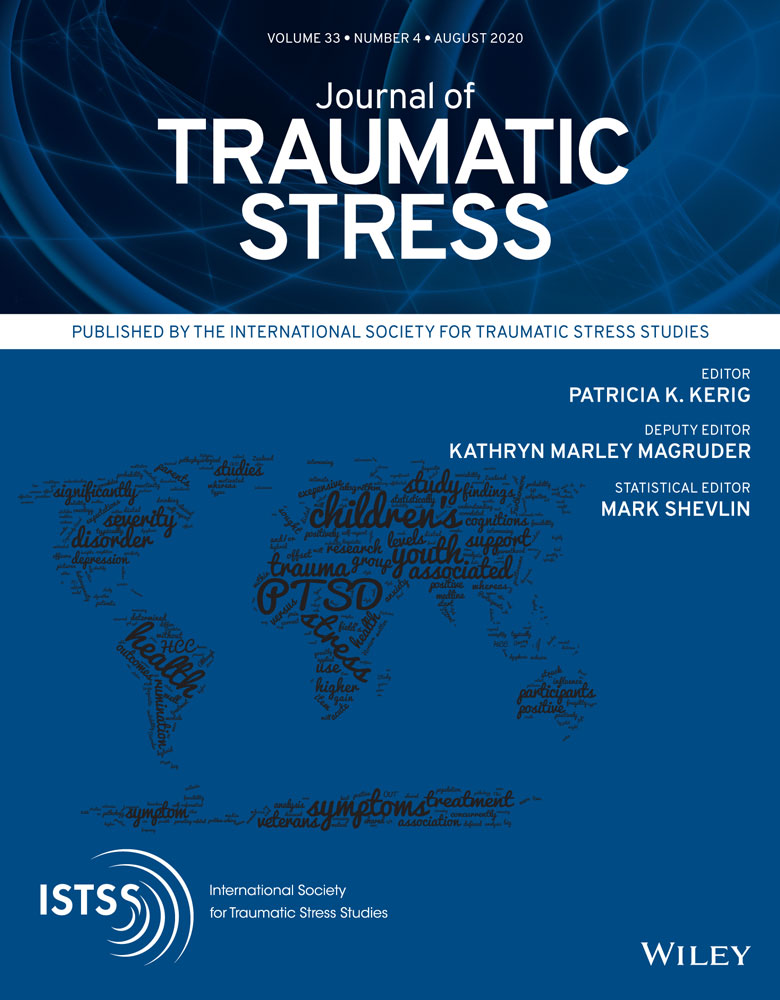Minority Participation in Randomized Controlled Trials for Prolonged Exposure Therapy: A Systematic Review of the Literature
This research did not receive any specific grant from funding agencies in the public, commercial, or not-for-profit sector. The authors declare no conflicts of interest.
Abstract
enPer the most recent census, non-Latinx White individuals comprise the majority of the U.S. population (76.6%); Latinx individuals make up 18.3% of the total U.S. population, followed by African Americans (13.4%) and Asians (5.9%). Given the high prevalence rates of posttraumatic stress disorder (PTSD) observed across many ethnoracial minority groups in the United States, the fact that PTSD presentation may vary across culture, and the National Institute of Health's mandates for the inclusion of women and minorities in clinical outcome research, the aim of the present systematic review was to examine minority inclusion in clinical outcome research for PTSD. Our review focused exclusively on one empirically supported treatment: prolonged exposure therapy (PE); we identified 38 studies that met the inclusion criteria. Apart from African Americans, who were overrepresented in 21 studies (inclusion rate range: 13.5%–73.9%), ethnoracial minority inclusion in RCTs examining PE was low. More specifically, across included studies that reported ethnoracial minority data, 58.9% of participants were White, 31.1% were African American, 4.9% were Latinx, 0.6% were Asian American or Pacific Islander, and 4.7% reported race as “other.” Inclusion rates for ethnoracial minorities appeared to increase across time, and recruitment strategies did not appear to be associated with increased ethnoracial minority participation in RCTs for PE.
Resumen
esSpanish Abstracts by Asociación Chilena de Estrés Traumático (ACET)
Participación de las Minorías en Ensayos Controlados Aleatorizados de Terapia de Exposición Prolongada: Una Revisión Sistemática de la Literatura
REPRESENTACIÓN DE MINORÍAS EN EAC DE EXPOSICIÓN PROLONGADA
Según el censo más reciente, las personas de raza blanca no latinas comprenden la mayor parte de la población estadounidense (76.6%); los latinos representan el 18.3%, seguido de los afroamericanos (13.4%) y los asiáticos (5.9%). Dada las elevadas tasas de prevalencia de Trastorno de Estrés Postraumático (TEPT) observadas en numerosos grupos minoritarios etnoraciales en Estados Unidos, el hecho de que la presentación de TEPT puede variar en función de la cultura, y los mandatos del Instituto Nacional de Salud para la inclusión de mujeres y de minorías en la investigación de resultados clínicos, el objetivo de la presente revisión sistemática fue examinar la inclusión de las minorías en la investigación de resultados clínicos para el TEPT. Nuestra revisión se centró exclusivamente en un tratamiento empíricamente validado: la terapia de exposición prolongada (EP); identificamos 38 estudios que cumplieron con los criterios de inclusión. Aparte de los afroamericanos, quienes estuvieron sobrerrepresentados en 21 estudios (rango de la tasa de inclusión: 13.5%–73.9%), la inclusión de minorías etnoraciales en Ensayos Controlados Aleatorizados (ECA) que examinaban EP fue baja. De manera más específica, en los estudios incluidos que reportaron datos de minorías etnoraciales, 58.9% de los participantes eran blancos, 31.1% eran afroamericanos, 4.9% eran latinos, 0.6% eran asiático americanos o de las Islas del Pacífico, y 4.7% reportó que la raza era “otra”. Las tasas de inclusión de las minorías etnoraciales parecieron incrementar a través del tiempo, y las estrategias de reclutamiento no parecieron estar asociadas con un incremento en la participación de minorías etnoraciales en los ECA de EP.
抽象
zhTraditional and Simplified Chinese Abstracts by the Asian Society for Traumatic Stress Studies (AsianSTSS)
簡體及繁體中文撮要由亞洲創傷心理研究學會翻譯
Minority Participation in Randomized Controlled Trials for Prolonged Exposure Therapy: A Systematic Review of the Literature
Traditional Chinese
標題: 少數族裔在延長暴露療法隨機對照試驗的參與:系統性文獻回顧
撮要: 根據最近一次的人口普查, 非拉丁裔白人為美國人口大多數(76.6%), 拉丁裔人佔全美國人口的18.3%, 非洲裔美國人佔13.4%, 亞洲人佔5.9%。創傷後壓力症(PTSD)患病率在美國很多的少數族裔人口中也高。由於PTSD的呈現方式在不同文化裡可能有異, 而國家衛生院授權在臨床治療研究中包含女性和少數族裔, 因此, 本系統性文獻回顧旨在檢視PTSD的臨床治療研究中, 包含少數族裔的情況。我們的回顧專注檢視一種具實證支持的療法:延長暴露療法(PE), 並找到38個符合檢視範圍的研究。非洲裔美國人在21個研究裡都有過多代表)包含率值域: 13.5%–73.9%(。但除此以外, 檢視PE的RCTs包含少數族裔的程度都低。更具體來說, 在有包含少數族裔數據的研究中, 58.9% 的參與者為白人, 31.1% 為非洲裔美國人, 4.9% 為拉丁裔人, 0.6%為亞裔美國人或太平洋島民, 4.7% 人士的族裔被列為「其他」。包含少數族裔的研究比率隨時間上升, 而招募樣本的策略似乎跟檢視PE的RCTs中有越來越多少數族裔參與無關。
Simplified Chinese
标题: 少数族裔在延长暴露疗法随机对照试验的参与:系统性文献回顾
撮要: 根据最近一次的人口普查, 非拉丁裔白人为美国人口大多数(76.6%), 拉丁裔人占全美国人口的18.3%, 非洲裔美国人占13.4%, 亚洲人占5.9%。创伤后压力症(PTSD)患病率在美国很多的少数族裔人口中也高。由于PTSD的呈现方式在不同文化里可能有异, 而国家卫生院授权在临床治疗研究中包含女性和少数族裔, 因此, 本系统性文献回顾旨在检视PTSD的临床治疗研究中, 包含少数族裔的情况。我们的回顾专注检视一种具实证支持的疗法:延长暴露疗法(PE), 并找到38个符合检视范围的研究。非洲裔美国人在21个研究里都有过多代表)包含率值域: 13.5%–73.9%(。但除此以外, 检视PE的RCTs包含少数族裔的程度都低。更具体来说, 在有包含少数族裔数据的研究中, 58.9% 的参与者为白人, 31.1% 为非洲裔美国人, 4.9% 为拉丁裔人, 0.6%为亚裔美国人或太平洋岛民, 4.7% 人士的族裔被列为「其他」。包含少数族裔的研究比率随时间上升, 而招募样本的策略似乎跟检视PE的RCTs中有越来越多少数族裔参与无关。




